
St Paul's Anglican Church is a Category II listed heritage building in the Christchurch, New Zealand suburb of Papanui.

St Paul's Anglican Church is a Category II listed heritage building in the Christchurch, New Zealand suburb of Papanui.
St Paul's was registered by the New Zealand Historic Places Trust on 9 December 2005 as a Category II heritage building, with registration number 7635. The current church, built in 1877, was designed by Benjamin Mountfort. [1]
The timber church was badly damaged in the February 2011 Christchurch earthquake. After an extensive restoration process the church was reopened in September 2013. [2]
Ernest Rutherford married his wife here in 1900. [3]
The graveyard at St Paul's Church is the last resting place for numerous notable Cantabrians. The first person to be buried in the cemetery was George Dunnage (ca 1803 – 19 May 1853), who was the first vicar of St Paul's. [4] Other notable burials include:

Papanui is a major suburb of Christchurch, New Zealand. It is situated five kilometers to the northwest of the city centre. Papanui is a middle socio-economic area with a population of 3,645 consisting predominantly of Pākehā 86.9%, Asian 7.6%, Māori 5.3%, Pacific peoples 3.1%, Middle Eastern/Latin American/African 0.7%. The suburb is located at the junction of three busy thoroughfares; Papanui Road leading to the city, the Main North Road that leads to North Canterbury and Harewood Road that leads to Christchurch International Airport. However, as with most Christchurch suburbs, Papanui has no defined borders.

The Diocese of Christchurch is one of the thirteen dioceses and hui amorangi of the Anglican Church in Aotearoa, New Zealand and Polynesia. The Diocese covers the area between the Conway River and the Waitaki River in the South Island of New Zealand.

The Latin Rite Roman Catholic Diocese of Christchurch is a suffragan diocese of the Roman Catholic Archdiocese of Wellington. Its cathedral and see city are located in Christchurch, the largest city in the South Island of New Zealand. It was formed on 5 May 1887 from a portion of the territory of the Diocese of Wellington, which was elevated to archdiocese later that same month.
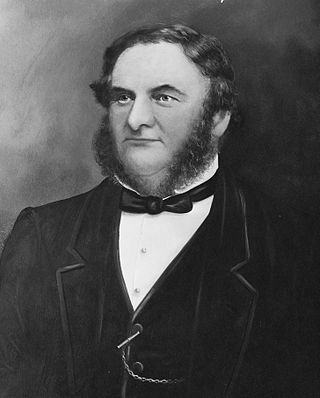
William Barbour Wilson, also known as Cabbage Wilson, was the first Mayor of Christchurch in New Zealand in 1868. A nurseryman by profession, he had large landholdings in Christchurch. His reputation was dented by a fraud conviction, and when he was subsequently elected onto the city council once more, five councillors resigned in protest.

John Anderson was the second Mayor of Christchurch in New Zealand 1868–1869, and a successful businessman. He had a close connection with three buildings that have later received Category I heritage registrations by Heritage New Zealand. Two of these buildings were demolished following the February 2011 Christchurch earthquake.
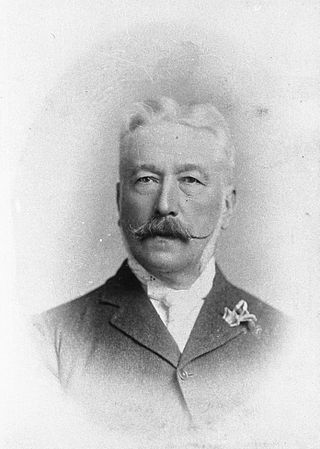
Edward Cephas John Stevens was a New Zealand politician in provincial government in Canterbury, and a member of both the lower and upper houses of parliament. A businessman, he controlled the Christchurch Press for many decades. He was instrumental in introducing cricket to Canterbury and one of his dealings as a land and estate agent resulted in the creation of Lancaster Park.
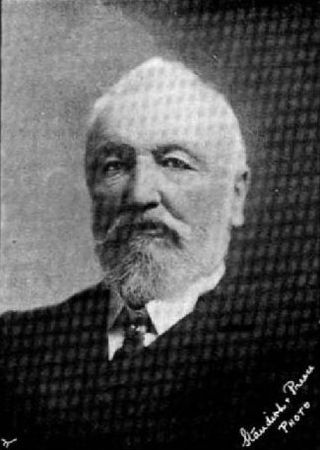
John Thomas Peacock MLC JP was a New Zealand businessman, philanthropist and politician. He came to Canterbury in 1844, several years before organised settlement started.
William Thomson was a 19th-century politician from Christchurch, New Zealand, originally from Scotland. He held office at all levels of government, from Parliament and Provincial Council to chairman of a road board. In his professional life, Thomson was an auctioneer, accountant and commission agent. He had rural holdings in Governors Bay and at the Esk River.

Holy Trinity Avonside was a heritage-listed Anglican church located in Linwood, Christchurch, New Zealand. It was registered as a "Historic Place – Category I" by the New Zealand Historic Places Trust. It was "damaged beyond the point of repair" in the February 2011 Christchurch earthquake and was demolished the following September.

Clarendon Tower was a high rise building on Worcester Street at Oxford Terrace in the Christchurch Central City, New Zealand. Built on the site of the former Clarendon Hotel, the façade of the historic building was kept in the redevelopment and was protected by the New Zealand Historic Places Trust as a Category II heritage structure. Following damage from the February 2011 Christchurch earthquake, the 17-storey building has been demolished.
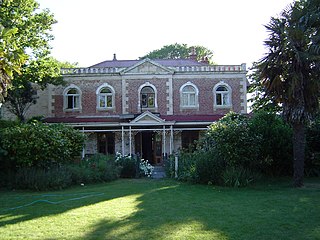
Linwood House was built as the homestead for Joseph Brittan, who, as surgeon, newspaper editor and provincial councillor, was one of the dominant figures in early Christchurch, New Zealand. The suburb of Linwood was named after Brittan's farm and homestead. Brittan's daughter Mary married William Rolleston, and they lived at Linwood House following Joseph Brittan's death. During that time, Rolleston was the 4th Superintendent of the Canterbury Province, and Linwood House served for many important political and public functions.

Joseph Brittan was a New Zealand surgeon, newspaper editor, and provincial councillor, was one of the dominant figures in early Christchurch. Born into a middle-class family in southern England, he followed his younger brother Guise Brittan to Christchurch, where he and his wife arrived in February 1852 with four children. Joseph Brittan soon got involved in the usual activities of early settlers and gained prominence in doing so. He had bought 100 acres on 10 July 1851 and took up 50 of this to the east of Christchurch that he converted to farmland. There, he built the family residence, and the suburb of Linwood was subsequently named after Brittan's farm and homestead of Linwood House.
Sir Kenneth Macfarlane Gresson was a New Zealand soldier, lawyer, university lecturer and judge. He was born on 18 July 1891 and attended Rangi Ruru. His father, John Beatty Gresson, was a solicitor in Christchurch, who died in a railway accident a few months before Kenneth Macfarlane Gresson was born. His grandfather, Henry Barnes Gresson, was one of New Zealand's first Supreme Court judges. He was buried in a family grave at St Paul's Anglican Church, Papanui.
Thomas Scholfield Foster, commonly known as Tony Foster, was a New Zealand school principal and inspector, and university lecturer.

St Saviour’s at Holy Trinity is an Anglican church in Lyttelton, Christchurch, New Zealand. St Saviour's Chapel was relocated from West Lyttelton to Christchurch's Cathedral Grammar School in the 1970s. Following the earthquakes and the demolition of Holy Trinity Church, Lyttelton, St Saviour's was returned to Lyttelton to the site of Holy Trinity in 2013.
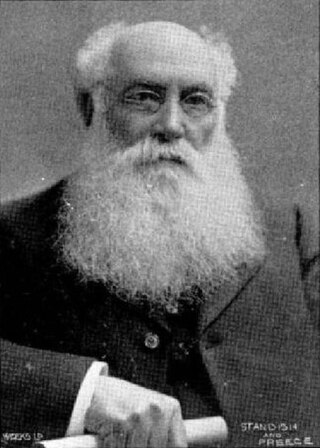
Samuel Charles Farr was a 19th-century builder and architect in Christchurch, New Zealand. He intended to emigrate from England to Auckland, but significant shipping problems saw him end up in Akaroa in 1850 instead. From 1862, he lived in Christchurch. Farr has a number of firsts against his name: the first marriage in Canterbury, he designed Akaroa's first church, designed New Zealand's first iron verandahs, and he started Sunday schools in Canterbury. As a leading member of the Acclimatisation Society, he stocked almost every lake and river in Canterbury with fish and was instrumental in introducing the bumblebee to New Zealand. His most notable building was Cranmer Court, the former Normal School, in the Christchurch Central City; this building was demolished following the February 2011 Christchurch earthquake.

William Guise Brittan, mostly known as Guise Brittan and commonly referred to as W. G. Brittan, was the first Commissioner of Crown Lands for Canterbury in New Zealand.
Robert William England was a New Zealand architect from Christchurch.
Lansdowne, also spelled Lansdown, is a locality south of Christchurch, New Zealand.
Maria Thomson was a New Zealand businesswoman. She established a private school and invested in property in Christchurch in the late nineteenth century.